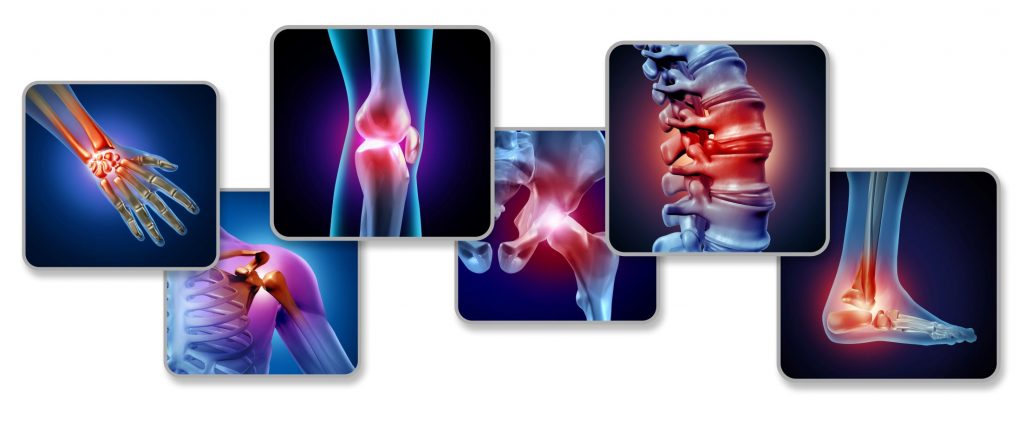
Topical Cream or Oral Supplement? Choosing CBD for Pain and Inflammation
NEWSFLASH: Using CBD can be a great way to reduce pain and inflammation.
…Okay, you probably knew that already!
Pain control is one of the biggest benefits CBD has to offer, and a main reason why so many patients use it.
CBD may help you decrease pain and inflammation, whether you’re:
- recovering from an injury [1]
- feeling sore after an extra-intense workout [1]
- dealing with arthritis, fibromyalgia, or age-related chronic pain. [2, 3, 4]

Why Use CBD for Pain?
The Centers for Disease Control and Prevention (CDC) estimates that around 50 million Americans suffer from chronic pain. [5]
That’s roughly 1 in every 5 people in the U.S.
And it doesn’t stop there…
The CDC also says chronic pain is “linked to restrictions in mobility and daily activities, dependence on opioids, anxiety and depression, and reduced quality of life” (Dahlhamer et al., 2019).
If you’re living with chronic pain, you know this all too well: the pain itself is horrible, but the ripple effect that it has in other areas of your life can be just as bad or even worse.
Yet the options for treating chronic pain are pretty limited.
The most common prescriptions given to patients with chronic pain are opioids – pain-relieving drugs with an extremely high risk of abuse.
According to the CDC, up to 1 in 4 people who take opioids long-term end up struggling with addiction. [6]
[Side note: I’ve watched loved ones become addicted to opioids. It’s tragic and painful, and I wouldn’t wish it on my worst enemy.]
In addition to the high risk of drug abuse, opioids come with lots of negative side effects, and an accidental overdose can be deadly.
CBD, on the other hand, is completely natural.
It’s also non-intoxicating, and, according to the World Health Organization, it carries no risk of addiction or abuse. [7]
Plus, research continues to show that it works:
- One study on patients with fibromyalgia found that “CBD treatment decreased pain by more than 30% in significantly more patients than placebo” (Van De Donk et al., 2019).
- Other studies have found it to be effective in treating chronic pain related to kidney transplantation and neuropathy. [9, 10]
- Further research suggests that it may reduce both arthritis pain and migraines. [11, 12]
Considering all this, it’s no surprise that CBD has become such a popular alternative for pain relief!
But before you can choose the right CBD product to treat your pain, it’s important to know whether you want an oral supplement to take by mouth or a topical application to rub directly onto your skin.
Many CBD enthusiasts – myself included – swear by both, but there are important differences between the two.
Let’s dig in.

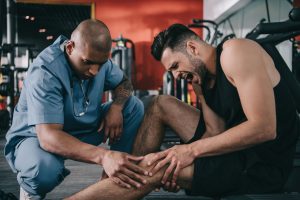
The Endocannabinoid System and the Skin
Your body’s endocannabinoid system (ECS) is a complex signaling system that helps you maintain balance in TONS of aspects of your daily life – including your mood, stress response, immune response, and perception of pain. [13]
To put it simply, the ECS is basically a big network of receptors.
Molecules that bind to these receptors are called cannabinoids. Some cannabinoids are made by your own body, while others like cannabidiol (CBD) come from plants.
It may be helpful to think of cannabinoids as keys, and your body’s cannabinoid receptors as locks.
When the cannabinoid “keys” bind to the receptor “locks,” that’s when you feel your ECS at work.
Pop quiz: Did you think cannabinoid receptors were located only in the brain?
If you answered yes, think again – and get ready to have your mind blown…
While the brain does serve as an important hub in the ECS, cannabinoid receptors are also located throughout your organs, immune system, and in nearly every single skin cell of your body. [14]
…Pretty crazy, right?!
This makes CBD extremely versatile as a supplement. It can be taken orally, or it can be absorbed directly through your skin.
Yes, taking CBD by mouth is an excellent way to reap its many benefits.
But depending on your health and the issues you want to address, adding a topical CBD product to your arsenal could take your pain relief to the next level.
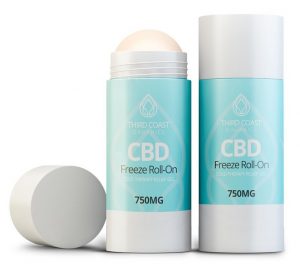
Topical CBD Products
CBD can be applied to the skin in multiple ways – salves, muscle rubs, and bath bombs, to name just a few.
When it comes to using CBD for pain relief, topical applications are a popular choice.
This is partly because they’re so easy to use:
- Step 1: Rub them on the area where you’re feeling pain.
- Step 2: Feel that pain start to melt away!
Seems simple enough, right?
…So then why should it make a difference whether you use CBD topically or orally?
Well, CBD that’s absorbed through your skin is processed differently by your body than CBD that’s absorbed in your digestive tract.
When CBD is applied to your skin, it never enters your bloodstream. Instead, it goes straight to the cannabinoid receptors in the skin it’s applied to. [15]
This could be either a good thing OR a bad thing, depending on your needs.
On the downside, the CBD not entering your bloodstream means that the ways in which your body can use it are limited. Applying CBD to a sore knee, for example, isn’t likely to help with anxiety symptoms or insomnia the way an oral CBD supplement could.
But on the other hand, using CBD topically gives you the opportunity to be highly specific when treating pain. If you have a bad knee, you can rub a CBD salve directly on it, and – bam! – you’re done.
Topical applications are a simple and easy way to decrease your pain with CBD, especially if that pain is localized to one or two particular areas of your body.
Besides, who says you can’t use CBD both topically AND orally?
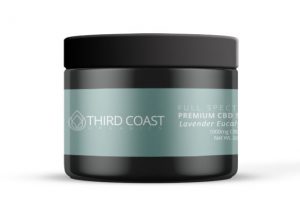
If you want to reduce your pain by applying CBD topically, use code PAINGOAWAY to get 15% OFF Third Coast Organics’ CBD Salve or CBD Infused Freeze Roll-On!
Oral CBD Products
One benefit of taking CBD orally is that, when held under your tongue for 30 seconds like we recommend, it’s absorbed more quickly and efficiently than it is through your skin.
Holding the CBD under your tongue allows for some of it to be absorbed directly by the mucus membranes in your mouth. This lets it bypass your digestive system and reach your bloodstream more quickly. [15]
The rest of it, after being swallowed, is processed by your liver before entering your bloodstream. This is also the case with gummies and other edible CBD products.
The biggest upside of having CBD circulating in your blood is that it gives your body the freedom to use those extra cannabinoids in a wider variety of ways.
Whereas CBD that’s absorbed through your skin has to stay in the area where it was applied, CBD that’s taken orally is able to travel throughout your body and go wherever it’s needed most.
This makes oral CBD more ideal for full-body effects. [15]
For example, if you’re feeling extra stressed out, having CBD in your bloodstream could increase the activity in your brain’s limbic system. [16]
According to research, this could help to calm your nerves – which may even strengthen your immune system. [17] (More on that here!)
Of course, this doesn’t mean that oral CBD won’t help to decrease your pain.
It just means that its effects are more multi-faceted than those of topical CBD products.
In my own experience, I’ve found that oral CBD works best for managing my anxiety, while topical CBD is a “silver bullet” for localized pain.
But what works for me may be different from what works for you – don’t be afraid to experiment with different products to find your perfect routine!
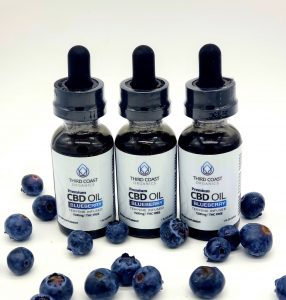
If you’re looking to enhance your wellness routine with an oral CBD supplement, use code BLUEBERRY15 to get 15% OFF Third Coast Organics Blueberry CBD Oil Tinctures!

Choosing Between Topical and Oral CBD
In the end, whether oral or topical CBD is best for you depends on your individual needs and personal preference – there’s no right or wrong answer.
Taking CBD orally allows for a wider variety of potential benefits, including pain control, anxiety reduction, sleep improvement, and more.
Applying CBD topically, on the other hand, serves as a more targeted approach to pain control.
Whatever your needs may be, Third Coast Organics has the product for you!
Oh, and did I mention that ALL of our products – both topical and oral – are third-party tested for purity and potency?
That’s right. We post the test results right on our product pages so you can rest assured that what you see on the label is exactly what you get in the bottle.
To get started on the path to a pain-free life with an oral CBD supplement, use code BLUEBERRY15 to get 15% OFF our Blueberry CBD Oil Tinctures.
If a topical CBD product seems more fit to ease your pain, use code PAINGOAWAY to get 15% OFF our CBD Salve or CBD Infused Freeze Roll-On.
Curious about the difference between full-spectrum CBD and CBD isolates? Wondering whether a CBD supplement will affect your drug test results? Check out our Frequently Asked Questions page for answers to these questions and more!
And if you have friends or family members who struggle with pain, share this article on Facebook – they’ll thank you later.
Your turn! Have you used CBD to treat your pain? What was your experience? Do you prefer topicals or oral supplements? Let us know in the comments below.
References
- McCartney, D., et al. (2020). Cannabidiol and Sports Performance: A Narrative Review of Relevant Evidence and Recommendations for Future Research. Sports Medicine, 6 (1), 27.
- Schroeder, M. O. (2019). Could CBD Help Relieve Your Arthritis Pain? Retrieved from https://health.usnews.com/conditions/bone-and-joint-disease/arthritis/articles/cbd-for-athritis
- Villines, Z. (2020). CBD for Fibromyalgia: Does It Work, And Is It Safe? Retrieved from https://www.medicalnewstoday.com/articles/321501
- Johnson, J. (2020). CBD Oil for Pain Management: Effects, Benefits, and Uses. Retrieved from https://www.medicalnewstoday.com/articles/319475
- Dahlhamer, J. et al. (2019). Prevalence of Chronic Pain and High-Impact Chronic Pain Among Adults – United States. Retrieved from https://www.cdc.gov/mmwr/volumes/67/wr/mm6736a2.htm
- Centers for Disease Control and Prevention. (2017). Prescription Opioids. Retrieved from https://www.cdc.gov/drugoverdose/opioids/prescribed.html
- Grinspoon, P. (2020). Cannabidiol (CBD) – What We Know and What We Don’t. Retrieved from https://www.health.harvard.edu/blog/cannabidiol-cbd-what-we-know-and-what-we-dont-2018082414476
- Van De Donk, T., et al. (2019). An Experimental Randomized Study on the Analgesic Effects of Pharmaceutical-Grade Cannabis in Chronic Pain Patients with Fibromyalgia. Pain, 160 (4), 860–869.
- Cuñetti L., Manzo L., Peyraube R., Arnaiz J., Curi L., Orihuela S. (2018). Chronic Pain Treatment with Cannabidiol in Kidney Transplant Patients in Uruguay. Transplant. Proc., 50 (2), 461–464.
- Xu, D., Cullen, B., Tang, M., Fang, Y. (2019). The Effectiveness of Topical Cannabidiol Oil in Symptomatic Relief of Peripheral Neuropathy of the Lower Extremities. Curr. Pharm. Biotechnol., 21 (5), 390–40.
- Hammell, D., et al. (2016). Transdermal Cannabidiol Reduces Inflammation and Pain-Related Behaviours in a Rat Model of Arthritis. European Journal of Pain, 20(6), 936–948.
- Berry, J. (2020). Does CBD Oil Help with Migraines? Retrieved from https://www.medicalnewstoday.com/articles/321653
- Morena, M., Patel, S., Bains, J. S., & Hill, M. N. (2016). Neurobiological Interactions Between Stress and the Endocannabinoid System. Neuropsychopharmacology: official publication of the American College of Neuropsychopharmacology, 41 (1), 80–102. https://doi.org/10.1038/npp.2015.166
- Caterina M. J. (2014). TRP Channel Cannabinoid Receptors in Skin Sensation, Homeostasis, and Inflammation. ACS Chemical Neuroscience, 5(11), 1107–1116.
- How Does the Body Absorb CBD? (2017). Retrieved from https://echoconnection.org/cbd-absorbed-body/
- Crippa, J.A. et al. (2011). Neural Basis of Anxiolytic Effects of Cannabidiol (CBD) in Generalized Social Anxiety Disorder: A Preliminary Report. Journal of Psychopharmacology, 25, 121-130.
- Cleveland Clinic. (2017, March 1). What Happens When Your Immune System Gets Stressed Out? Retrieved from https://health.clevelandclinic.org/what-happens-when-your-immune-system-gets-stressed-out/

Thomas Allred is a freelance writer and licensed Physical Therapist Assistant with a BA in psychology from Texas A&M University. He developed a keen interest in CBD during a 10-year struggle with uncontrolled epilepsy. When he’s not writing, Thomas enjoys cooking, playing guitar very badly, and exploring Austin with his wife and dog. Find him online at www.thomasallredwriting.com.
